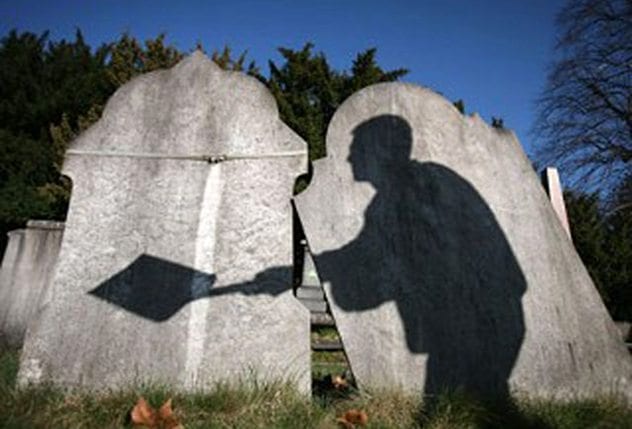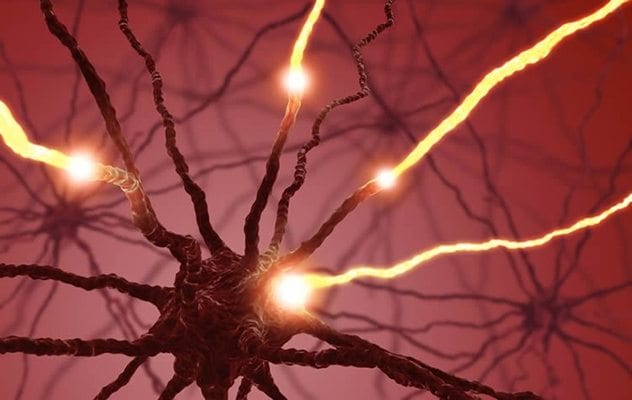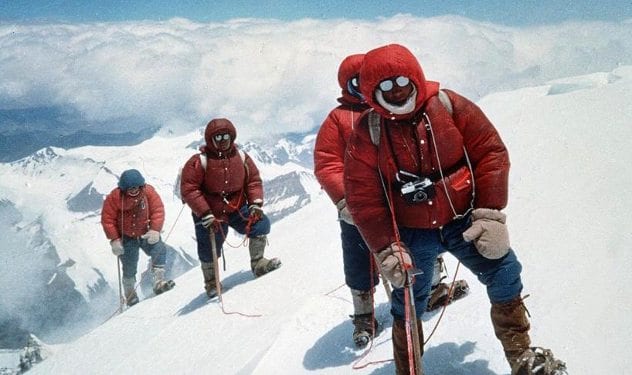10How We Die
The leading cause of death around the world is heart disease. In 2015, over eight million people lost their lives due to Ischaemic heart disease, making up about 15 percent of the 56.4 million deaths that occurred that year. Heart disease can take various forms, but ultimately restricts blood flow to the heart and increases the risk of a heart attack. It can be caused by a number of factors, including smoking, high cholesterol, high blood pressure, diabetes, and even inherited diseases. The next highest cause of death globally is stroke, followed by lower respiratory infections, chronic obstructive pulmonary disease, and trachea, bronchus, and lung cancers. The rest of the top ten causes of death include diabetes, Alzheimer’s, diarrheal diseases, tuberculosis, and road injuries. Heart disease and strokes make up 27 percent of all deaths, and over half of all deaths worldwide are due to these top ten causes.
9Sealed Tight
On some people, a waxy substance called “adipocere” may be formed during the decay process that covers the entire body. This substance can be either white, gray, or yellow, and has a varying consistency. Once formed, it helps preserve the body and can keep it fresh (well, as fresh as a dead body can be) for several years. As a body begins to decompose, fat cells release enzymes and break triglycerides into saturated and unsaturated fatty acids in a process called hydrolysis. In the right conditions, hydrolysis will continue until all molecules are turned into fatty acids, and the unsaturated fatty acids will then react with hydrogen to form the compounds that make adipocere. Adipocere slows the decomposition process by resisting bacterial action that would otherwise begin to attack the body. Adipocere can be frustrating for authorities in graveyards because it prevents the process of recycling grave plots. Scientists and archeologists, however, find it extremely useful because it gives them the ability to autopsy bodies that have been buried for a long time. The ability of adipocere to preserve a body has been helpful to scientists examining bodies even a century old.
8Dead Still
Rigor mortis, the stiffening of the body after death, is caused by a loss of Adenosine Triphosphate, a process that forces the body’s muscles to contract and become stiff. Rigor mortis affects small muscles before larger ones and begins around two hours after death. After all the muscles have contracted, rigor mortis lasts between 36 and 48 hours, after which the body reverses the process and returns to a limp state. Rigor can be reversed early by stretching the muscles. A body in warm temperatures will stiffen more quickly than a body in a colder environment. This is why drowning victims are often still flaccid when pulled out of the water even if they have been submerged for several days. Rigor is also sped up if there has been intense physical activity close to the time of death. Forensics use rigor mortis to help them determine the time of death: If a body is rigid, the victim has likely died within 48 hours. This method is not always accurate, however, due to the many factors that can affect the timeline of rigor.
7Discoloration
Lividity is when the body’s remaining blood is no longer pumped through the veins after the heart has stopped. This causes the blood to settle in response to gravity and creates dark purple spots in those areas. This response to gravity means the discoloration can vary from victim to victim depending on their position after they died. For example, a body on its back will show lividity in places touching the ground or surface they are on. If the victim was hanged, blood would show in the feet, fingertips, and earlobes. Lividity, also called Livor Mortis or Post Mortem Hypostasis, begins showing within 30 minutes of the heart stopping and can last up to 12 hours. Unlike rigor mortis, lividity can be fixed in the body after eight to 12 hours of death. Certain poisons can make the discoloration different colors, which can help forensics when determining cause of death. Carbon monoxide will turn the lividity areas cherry pink.
6Snack Time
Your body is filled with bacteria, and as soon as you die, it begins chowing down on you. After death, microbes start in the intestines and begin eating the body from the inside out. Soon after, bacteria on the skin or from the body’s environment start decomposing the body from the outside in. Why don’t we have a problem with this bacteria when we’re alive? The biggest reason is our immune system, which no longer works after we die. Bacteria also thrives in warm temperatures, and with no way to create heat, the body begins cooling off immediately after death. There is a relatively small line between us living healthy lives and being eaten by our own bacteria. While alive, our body is constantly fighting against harmful bacteria trying to attack us. When we die, we lose the battle.
5Go Big or Go Home
Dead bodies swell up about four days after death in a stage called “bloat.” This is caused by a buildup of gasses and liquids released by autolysis, where the pancreas and other organs filled with digestive enzymes break themselves down. (This happens when a body does not go through an embalming or preservation process.) The swelling begins at the abdomen and gradually increases to the entire front of the body. Decomposing tissue also makes the skin become discolored and forms blisters, while fluid from the lungs also comes out of the mouth and nose, creating an awful smell. Warm weather increases the rate of swelling while cold weather slows it down. Flies and other bugs are very attracted to the smells a bloating body releases. Blowflies have been known to lay their eggs in bodies early in the decomposing process, and some beetles will live in corpses after they have begun to dry out. Forensics can use the different types of bugs infesting a body to help determine the approximate time of death. As a body enters the late stages of bloating, it also begins putrefaction, which is the process of decay or rotting. By this time the skin is mostly gone, and the body collapses in on itself. Obese people tend to decay more quickly than those who are skinny or average weight, and scientists say this is because they have more liquid in their bodies that is favorable to the autolysis process.
4Scared to Death
Being “scared to death” is a common figure of speech, but there is plenty of truth behind it. When a person finds themselves in a situation of overwhelming fear, their instinctual fight-or-flight response kicks in. This causes a surge of adrenaline to flood the body, making the body experience rapid heart rate, dilated pupils, and increased blood flow to the muscles. Released adrenaline also opens calcium channels in the heart which cause the heart muscle to contract. In a severe situation where adrenaline is continually pumped through the body, and the calcium channels won’t close, the heart muscles are unable to relax. This can cause an individual to develop an arrhythmia, meaning the heart does not beat regularly. This, in turn, can lead to blood pressure dropping and loss of consciousness, which can cause all sorts of health problems and even death. While people with pre-existing heart problems are more prone to extreme outcomes of adrenaline, even a healthy individual is at risk of death from arrhythmia. Fear also is not the only culprit: Any extreme emotion, caused by things such as extremely loud noises or a sporting event, can trigger a reaction.
3Afterthoughts
A severed head may remain conscious for a few seconds after decapitation. Many scientists say it is unlikely this would happen since loss of blood and oxygen would cause the brain to go into a coma immediately, but recent animal studies are indicating there might be some truth behind such a bizarre claim. In 2011, Dutch scientists measured brain waves of mice before and after decapitation and found brain activity of conscious levels in the mice for nearly four seconds after their heads had been cut off. A 2002 study showed brain cells could survive for several weeks after death in a lab. Surviving brain cells in a lab are different than conscious activity in the real world, though. Also, some scientists believe any perceived movements after death are muscles spasms that occur involuntarily as the body shuts down.
2Roadblocks
There are over 200 dead bodies on Mt. Everest. Some are concealed, but some are treated as landmarks for climbers trying to reach the summit. The most famous body is that of Tsewang Paljor, who died in a blizzard on Everest in 1996. When snow is relatively shallow, climbers have to step over his extended legs as they get close to the peak. At over 29,000 feet (8,800 meters), Mt. Everest is the tallest above-land mountain in the world. Since the 1950s, over 4,000 people have summited it, and 216 people have been known to die on its face. Bodies are often left on Everest because it poses too much of a risk to try to get them down. The air is so thin that near the top, brain cells begin dying from lack of oxygen. There is a good chance death will await someone trying to remove the frozen bodies from their snowy graves.
1Sharks vs. Vending Machines
It is very unlikely to be killed by a shark—the United States experiences 16 shark attacks each year, with less than one fatality every two years statistically. Vending machines, on the other hand, claim the lives of 2.18 people per year, making your snack sources almost twice as likely to kill you. Plenty of other causes pose a higher risk of death than shark attacks. Falling coconuts cause about 150 deaths annually, cows kill 20 people a year, and bees are responsible for 100 deaths each year. On a larger scale, almost 6,000 people die from tripping and falling at home each year, and mosquitoes claim the lives of over 800,000 people each year, mainly due to malaria in developing countries. Anne is a freelancer who loves writing almost as much as she loves her dog and peanut butter M&M’s. She writes often on her blog, Sondering Soul, and hopes to inspire others with her work.
























